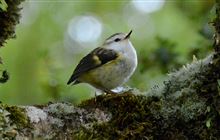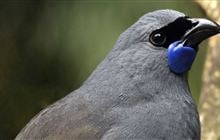Protecting vulnerable native species with 1080 gets results
Archived content: This media release was accurate on the date of publication.
Introduction
Successful breeding results for several of our vulnerable native birds is a result of using 1080 to kill predators.Date: 05 April 2017 Source: Office of the Minister of Conservation
Conservation Minister Maggie Barry says successful breeding results for several of our most vulnerable native birds come as a result of using 1080 to kill predators.
“New results from a five-year study of South Island kākā nesting at Lake Paringa in South Westland show 30 times as many kākā chicks were produced and survived in the area after 1080 treatment to control stoats and possums compared to the area where no 1080 was used,” Ms Barry says.
“Put another way - 55% of kākā nests were successful up to a year after 1080 treatment but only 1.75% were successful where the compound was not used. 97% of adult kākā survived in 1080 treated areas."
“Results just in for the reclusive rock wren are also showing very high nesting success following aerial 1080 treatment last spring in Kahurangi National Park. Over summer we monitored 40 nests at three site and none were lost to stoats, and only 1 to rats,” Ms Barry says.
Last year DOC began a new study of great spotted kiwi in Kahurangi National Park to look at the benefits aerial 1080 pest control.
“It’s encouraging to see a significant proportion of the kiwi in our study are young birds – 10 of the 32 are juveniles that would have hatched since the Battle for our Birds (BFOB) aerial 1080 operation there in 2014. That’s a higher proportion of young birds than we’d normally see suggesting they are already benefitting from 1080 use,” Ms Barry says.
“Also in Kahurangi National Park as part of this year’s BFOB programme DOC is monitoring the kea population. So far all radio tagged kea have survived and 3 out of 6 monitored nests have successfully produced young kea with another nest still on the go.”
“DOC carefully tracked more than 20 kea during predator control operations in the park last year and none were lost to 1080 poisoning.”
The Government has committed $28 million over four years towards Predator Free 2050 - and momentum is growing as communities sign up to help make our ambitious plan a reality," Ms Barry says.
Background
- Since August 2016 DOC has undertaken aerial 1080 and ground trapping operations at 23 sites in the North and South Island. There is just one 1080 pest control operation to go in the central North Island (30,000 ha) in May this year.
- The Battle for our Birds pest control programme is targeted at protecting some of our most vulnerable native species from introduced predators. They include kiwi, kākā, kea, whio/blue duck, mohua/yellowhead, kākāriki/orange-fronted parakeet, rock wren, long and short tailed bats and giant snails.
- Scientific monitoring from 2014 showed that mohua, rock wren, kea, robin and rifleman all had better nesting success and raised more young in areas with 1080 treatment than areas without.
- Monitoring has also shown the benefits of 1080 pest control to both long and short-tailed bats with bat colonies growing after pest control.
Contact
For media enquiries contact:
Email: media@doc.govt.nz


